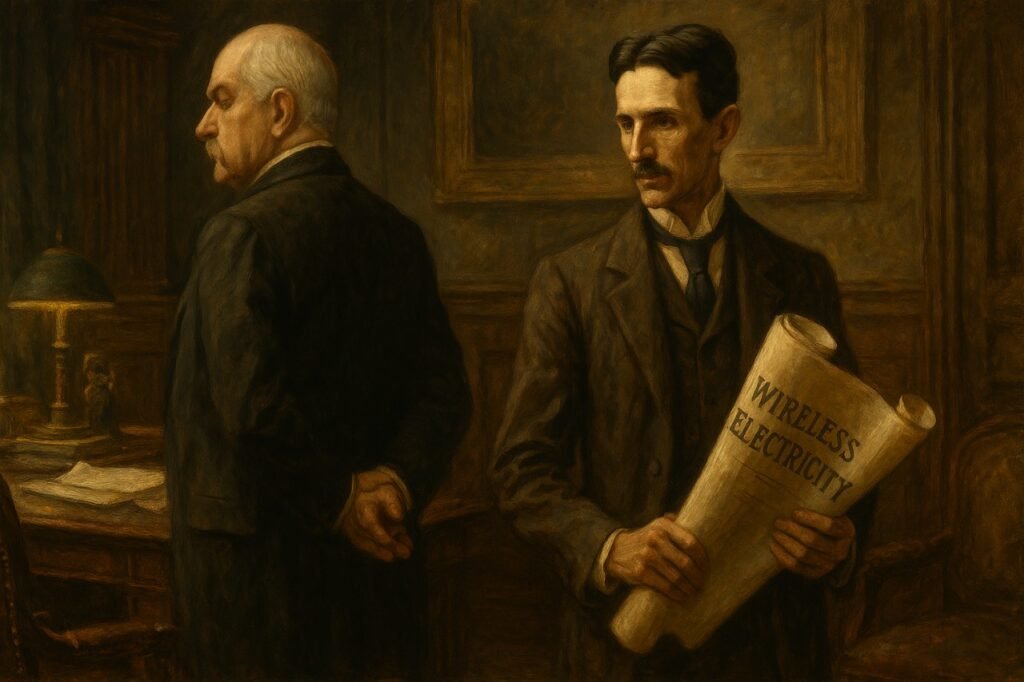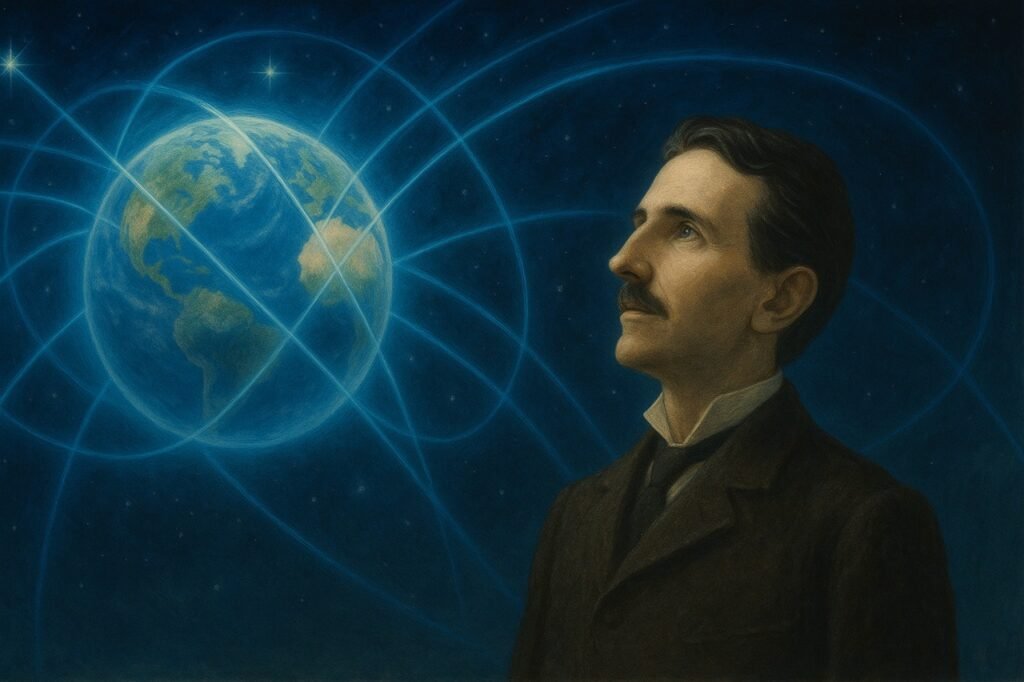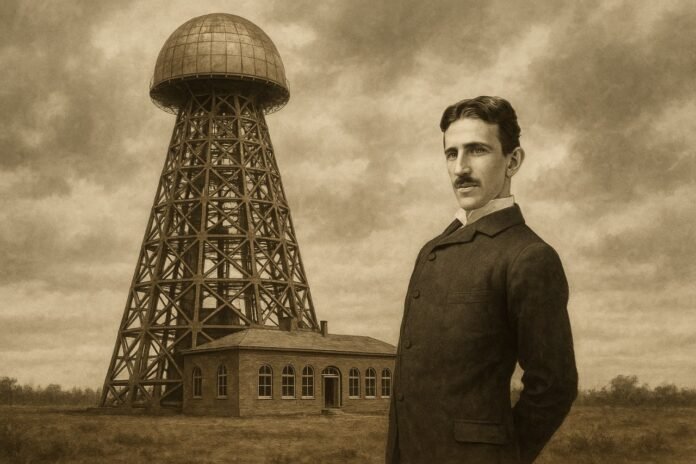Nikola Tesla Wireless Electricity When most people think of Nikola Tesla, they picture the genius behind modern electricity and engineering. Yet tucked away in his vast collection of notes was an even bolder dream: the ability to send electrical power through the air, without wires, towers, or poles. Tesla imagined a global network capable of lighting homes and running factories without a meter or a charge. He saw a future where energy flowed like the wind, entirely free. Ultimately, that vision never powered a single light bulb. This post digs into what Tesla’s invention looked like, why it was a game changer, and why the world chose to look away.
Tesla’s Dream of Free Wireless Energy
Tesla’s vision was more than a technical marvel; it was a moral statement. He argued that access to energy should belong to every person, the same way sunlight or air does. By tuning in to the Earth’s natural electromagnetic fields, he reasoned that electricity could ride the atmosphere, much like radio waves. His dream was a planet where distance, income, and geography would no longer decide who could get power.
When Tesla first proposed his idea, big energy companies were just learning how to profit from stretched copper wires. His wireless grid posed a direct challenge to that business model. It promised humanity the chance to live without electricity bills, maintenance costs, or dirty smoke and cables—and, more crucially, it promised release from the grasp of powerful corporations.
The Wardenclyffe Tower: Tesla’s Wireless Energy Transmitter
To turn his dreams into durable inventions, Nikola Tesla erected the Wardenclyffe Tower in Shoreham, New York, in 1901. Towering 180 feet and crafted from steel and masonry, the structure was designed as the first full-size prototype of a worldwide power station. Tesla imagined the tower pulsating with electricity that would travel through the Earth’s crust and sky, arriving at distant homes and factories as light and motion, without wires.
Financier J. P. Morgan provided the capital, envisioning only a new kind of telecommunications. Unbeknownst to Morgan, Tesla’s true ambition was grander: to transmit energy itself, a current of power moving unconfined through the invisible medium of air.
Why the Project Was Silenced

The inventor’s defeat had nothing to do with circuitry or magnetic fields. When Morgan discovered that Tesla’s system could, in theory, deliver electricity without a tariff, he inquired, “If anyone can get power, where do we put the meter?” Disappointed by the absence of a revenue stream, Morgan yanked his funding, and the capital community shuttered its purse. Builders halted the tower, creditors came knocking, and Tesla, staring at the rusting skeleton of his vision, saw a prophecy of unlimited energy labeled as “impractical” and “unprofitable.”
Misunderstood by the Scientific Community
Alongside money troubles, Tesla’s contemporaries questioned his ideas. His vision for transmitting power without wires was light-years ahead, and the notion that energy could travel through the air was just too foreign for many.
He also liked to keep his work private, often shutting himself away in his lab and refusing to share prototypes. That pulled the rug out from under collaborators and skeptics alike. Without formal studies in journals or a functioning business to show it could fly, Tesla’s vision for wireless power slipped through the cracks of established science.
The Collapse of the Wardenclyffe Dream

No cash and no help meant his experiments eventually stalled. In 1917 the U.S. government, spooked by the war, ordered Wardenclyffe steel crane to come down, citing security. Some claimed it was a cover-up to erase a rival and protect entrenched energy interests.
When he died in 1943, the government swooped in and seized his papers. Historians think those notebooks could have contained the last jigsaw pieces for launching wireless energy, but the pages vanished for good.
Rediscovering Tesla’s Vision in the Modern Age
Finally, many of the ideas he sketched about energy in the air are creeping into everyday life. Trios of circular copper coils now keep cellphone batteries charged, toothbrushes humming, and someday maybe even buses and taxis gliding along with no plugs.
Some scientists are still chasing Nikola Tesla’s dream of sending power through the air without wires. They are testing lasers, microwaves, and solar power beams from satellites. Even though we can’t charge a phone from the other side of the world yet, today’s experiments show that Tesla’s big idea can work. He didn’t miss the mark; he just imagined the future a little sooner than the rest of us.
Why His Genius Was Ignored
Tesla did not fall short on brilliance; he fell victim to a world that refuses to bend. His inventions jolted monolithic industries, while his vision of limitless, clean energy shadowed fortunes that depended on scarcity.
In cultures that worship profit, breakthroughs that cannot be priced are often shunned. Tesla represented equity and evolution, yet his principles clashed with the stake-driven mindset of his time. Thus, his vision of energy flying vanished—not because it was flawed, but because it threatened the iron grip of ownership.
Conclusion
Nikola Tesla was not merely an inventor; he was a futurist. His idea for wireless power could have delivered energy for pennies, with no smokestack and no meter. Yet, a cocktail of corporate avarice, academic skepticism, and a thin wallet left that promise dim.
Today, as we tread the 21st century, fresh eyes are turning to Tesla, revealing the wide footprints he left. Perhaps the long-forgotten ember of wireless energy will someday spark a global current—and that day, we will finally honor the brilliance we once turned away.



